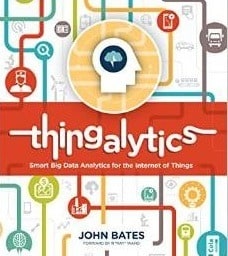
Improved integration will deliver long-term ROI by avoiding lost revenue and building a solid technology foundation that will last well into the post-pandemic future.
From supply chain and inventory control to business process alignment and compliance mandates, the balancing act of multi-enterprise business-to-business (B2B) integration is highly complex. On top of that, COVID-19 has added even more complications to these efforts.
Pandemic-related changes to risk tolerance, selling cycles, and power structures have slowed mainstream adoption of some B2B technologies. At the same time, industry analysts have found that while executives invested to digitalize customer and supply chain interactions at a rapid pace during COVID-19, many are circling back to more strategically align these initiatives and resource investments.
These are just some of the post-pandemic challenges for companies trying to achieve proper B2B integration across their supply chains to streamline revenue-critical data flows across disparate systems. And unfortunately, many of them are bleeding revenue by not integrating their internal and external systems successfully.
See also: Why Data Integration is the Rodney Dangerfield of BI
Post-COVID-19 revenue losses, with poor integrations as a main culprit
Recent data shows that nearly 9 out of 10 companies (89%) made operational business decisions to change course in response to the global pandemic. And more than 96% said that COVID-19 forced them to change their business strategy for 2021 for growing their digital commerce channels, accelerating cloud migration, and focusing on digital transformation.
However, it’s the bottom line – namely, lost revenue – where you’ll find stark indicators of the damage done. When companies are faced with integration issues, they end up bleeding more revenue than they realize, and that became more apparent than ever in 2020.
Seventy-four percent of companies reported losing more revenue due to integration issues in 2020 than in 2019. Two-thirds of those respondents said their companies lost up to $500,000 (increased from 43% losing that amount in 2019), and a full 10% said they lost up to $1 million or more in revenue. While the scope of losses may have varied from company to company, respondents cited the pandemic as the primary reason behind these revenue shortfalls.
Changing the game for B2B integrations
COVID-19 shined a harsh light on where companies fall short and what they need to know about modern integration technology. The pandemic created radical disruptions in global supply chains as firms found their existing production strategies strained under pandemic-induced shifts in product demand and availability of goods. This has created an inflection point for executives to re-examine their companies’ entire integration ecosystem – one that should ideally be built to be agile enough to withstand future disruptions on a similar scale.
The first step is to acknowledge the reality that – if you lost revenue because you continued to rely on disparate legacy technologies – your B2B integration is basically on life support. You cannot best serve your customers and drive more revenue when you don’t have end-to-end integration visibility across key internal and external business processes such as Order-to-Cash, Procure-to-Pay, or Load-Tender-to-Invoice.
Not surprisingly, companies that have adapted, evolved, and embraced what a modern integration platform can offer will have a long-term advantage going forward, and they’ll find that journey easier once they leverage the cloud.
3 key steps to stop losing revenue from poor integration
If you want your business to remain competitive in the face of the irreversible digital transformation that is sweeping the global business environment, then revitalizing your integration strategy in 2021 and beyond should be a priority for your IT team. This will ensure you put a stop to lost revenue and get on stronger footing for sustained growth. To begin the process, below are three top priorities to align your integration efforts and get back on the path toward consistent, profitable growth:
1) Identify integration gaps within your supply chain
Integration gaps are a main culprit behind the lost revenue we’ve been discussing. Regardless of the specific makeup of your architectures and assets, you lose money any time your applications and dataflows are not seamlessly integrated and aligned. Most often, this happens when companies cling to outdated, manual processes for integration; and that is a recipe for revenue loss in today’s digital economy.
Thankfully, with a modern integration platform, you can plug these gaps with proven, pre-configured connectors and templates, allowing you to spin up fast and efficient application integrations. With API integration, for example, the information contained in an important database can be shared with your other internal systems, increasing the value of that data across multiple teams. Externally, your company could make its APIs available to your customers and partners in your supply chain so that selected and mutually beneficial data can be shared seamlessly and in real-time.
2) Make sure to have end-to-end visibility into all business processes
Similar to integration gaps, inadequate visibility into your systems and how they work together will render moot many of the benefits you could otherwise reap from whatever tools and processes you may have at your disposal. Manufacturers, logistics companies, wholesale distributors, retailers, and other parties need greater real-time visibility today into the entire B2B ecosystem for better process alignment and reduced exposure to risk. This increased visibility is essential, particularly in mission-critical settings, such as COVID-19 vaccine distribution, where perishable contents, complex final mile requirements, and tight timelines for delivery are involved.
3) Stop relying on disparate legacy technologies
Many enterprise leaders are hesitant when it comes to evolving beyond familiar legacy architectures. Often, businesses have invested heavily in their legacy applications, and they don’t want to replace their existing architecture; yet they still want the agility of access to the cloud. With a modern integration platform, enterprises can accelerate seamless end-to-end integrations between their multi-enterprise ecosystem and internal systems – including legacy components and previously misaligned technologies.
The reality is that once you have the proper cloud-based platform to better integrate all the solutions running across your business ecosystem, there will be fewer reasons to keep relying solely on outdated legacy systems. This is especially true given that today’s robust ecosystem integration solutions — especially if they blend both EDI and API integration capabilities on a single platform — enable development, execution, and governance of integration flows to connect any combination of on-premises and cloud-based processes.
Putting modern integration into action
The three modernization steps discussed in this article – finding the integration gaps, gaining end-to-end business process visibility, and evolving beyond legacy applications – will help upgrade your integration capabilities so your organization can activate B2B eCommerce more quickly and ensure the success of your digital transformation strategy. Such efforts will also deliver long-term return on investment (ROI) by avoiding lost revenue and building a solid technology foundation that will last well into the post-pandemic future.



























